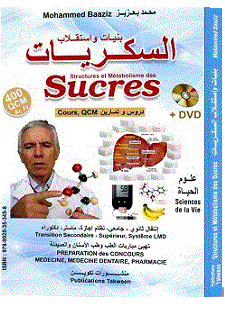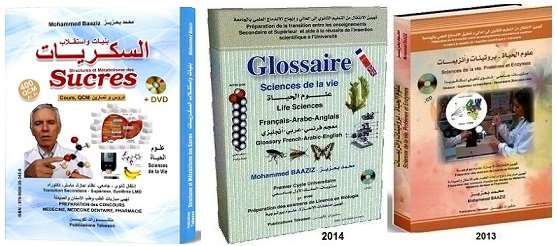التعليم. مشروع نهاية الدراسة
Education. Project of the end year study (PFE)
Among the education activities at the university, the end-of-study project (PFE) carried out by biology students covers various subjects such as the use of plants in herbal medicine.
من بين الأنشطة التعليمية في الجامعة، مشروع نهاية الدراسة (PFE) الذي ينفذه طلبة علم الأحياء، يغطي موضوعات مختلفة مثل استخدام النباتات في طب الأعشاب.
استخدامات أنواع الخزامى في الوقاية من السرطان وعلاجه من حيث الخصائص المضادة للأكسدة
Uses of Lavandula (lavender) species in the prevention and treatment of cancers with regard to antioxidant properties
AIT EL HAMSA Mohamed & BALQUIS Mohamed (option physiologie animale, 2022)
Youtube video link: Lavandula and cancer
ملخــص
يوجد الخزامى (جنس Lavandula) في أنواع مختلفة، بما في ذلك اللافندر الطبي (Lavandula officinalis L). إنه نبات عطري وعلاجي معروف، يحد من تأثيرات الاجهاد والالتهابات. عندما تصبح مزمنة، تكون الالتهابات مصحوبة بمستويات عالية من أنواع الأكسجين التفاعلية (ROS) ، يليها ظهور السرطانات. من أجل معرفة المزيد عن الوقاية من السرطان وعلاجه بالخزامى، أدا بعين الاعتبار خصائصه المضادة للأكسدة، تم إجراء دراسة مقارنة على مضادات الأكسدة الكيميائية والإنزيمية لثلاثة نباتات، Lanvandula officinalis L(المعروف باسم الخزامى) ، Aloysia citriodora (لويزة ) و Artemisia herba alba (الشيح). للقيام بذلك، تم استخدام المستخلصات الأنزيمية المحضرة باستخدام مسحوق الأسيتون الذي تم الحصول عليه من الجزء الجوي لهذه النباتات. بالمقارنة مع لويزة و الشيح، يحتوي الخزامى على متوسط مستوى إجمالي الفينولات (2.08 مجم / مل) أي ما يقرب من 1.3 مرة أكثر و 0.7 مرة أقل من تلك التي سجلت في الشيح و لويزة ، على التوالي. مع حيث الأنشطة الأنزيمية التي تقدر ب 4726.08 U.g-1 MF و 6153.6 U.g-1 MF ، يظهر الشيح واللويزة على التوالي 2.27 مرة و 2.96 مرة من النشاط الإنزيمي للخزامى. على الرغم من انخفاض مستواه النسبي لنشاط البيروكسيديز (Peroxidase)، يظل نبات الخزامى غنيًا بمضادات الأكسدة الكيميائية (الفينولات). تؤيد هذه النتائج الأولية استخدام الخزامى للوقاية من السرطان وعلاجه من خلال العمل على تخفيظ أنواع الأكسجين التفاعلية والالتهابات المصاحبة لها.
بالإضافة إلى ذلك، أتاحت هذه الدراسة مناقشة دور الكحول البريلي (Perillyl alcohol) الذي يدخل في التركيب الكيميائي لمستخلصات الخزامى، كمضاد للأكسدة أو مؤكسد، وفقًا للمستوى التأكسد ROS المرتبط بمستوى تطور السرطان.
كلمات مفتاح: خزامى، حلحال- لخزامة Lavandula officinalis L ، سرطان، فينولات، بيروكسيداز، ROS، peroxidase، مضادات الأكسدة
Summary
Lavender (genus Lavandula) exists in different varieties, including officinal lavender (Lavandula officinalis L). It is an aromatic and therapeutic plant known, among other things, to act on anxiety and inflammation. When they become chronic, the inflammations are accompanied by high levels of reactive oxygen species (ROS), followed by the appearance of cancers. In order to learn more about the prevention and treatment of cancer with lavender, with regard to its antioxidant properties, a comparative study was carried out on the chemical and enzymatic antioxidants of three plants, Lanvandula officinalis L (known as lavender), Aloysia citriodora (verbena) and Artemisia herba alba (mugwort). To do this, enzymatic extracts prepared using acetone powder obtained from the aerial part of these plants, were used. Compared to verbena and mugwort, lavender has an average level of total phenols (2.08 mg/ml), i.e. nearly 1.3 times more and 0.7 times less than that recorded by mugwort and verbena, respectively. With enzymatic activities reaching 4726.08 U.g-1 MF and 6153.6 U.g-1 MF, mugwort and verbena show respectively 2.27 times and 2.96 times the enzymatic activity of lavender. Despite its relatively low level of peroxidase activity, lavender remains rich in chemical antioxidants (phenols). These preliminary results are in favor of the use of lavender to prevent and treat cancer by acting on the attenuation of ROS accompanying inflammation.
In addition, this study made it possible to discuss the role of perillyl alcohol as a chemical compound of lavender extracts, as antioxidant or pro-oxidant, according to the respective level of ROS correlated with the level of cancer development.
Key words: lavender, Common Lavender, cancer, phenols, antioxidants, ROS, peroxidises
استخدامات لويزة الليمونية في علاج الالتهابات المزمنة اعتبارا للقوة المضادة للأكسدة.
Uses of lemon verbena in the treatment of chronic inflammation with regard to antioxidant power
El Aichi Soukaina & Bahassa Chaima (option physiologie animale, 2022)
Youtube video link: Verbena and chronic inflammation
ملخــص
نبات اللويزة، (Aloysia citriodora) verbenacée نبات يستخدم في الطب التقليدي لعلاج الالتهاب ومضاعفاته. أظهرت الأبحاث أن هناك علاقة بين أنواع الأكسجين التفاعلية، ROS ، ومضادات الأكسدة والالتهابات المزمنة. على صعيد المثل ، فإن 15-20٪ من الأورام البشرية تنشأ عن التهاب مزمن. من أجل إجراء دراسة أولية مقارنة لمضادات الأكسدة الكيميائية والإنزيمية لبعض النباتات الطبية ، تم استخدام نبات لويزة والشيح، Artemisia herba alba، والخزامى،Lavandula angustifolia ، في تحضير المستخلصات الأنزيمية من مسحوق الأسيتون. من الجزء الجوي للنباتات الثلاثة. يحتوي نبات لويزة على تركيز منخفض نسبيًا من الفينولات، يصل إلى 1.406 مجم / مل ، مقارنة مع نبات الشيح (2.66 مجم / مل) والخزامى (2.08 مجم / مل). اعتمادا على وحدة إنزيمية لكل جرام من المادة الطازجة،U.g-1 MF ، في قياس النشاط الأنزيميلبيروكسيديز، ثبت أن نشاط لويزة ، 6153.6 U.g-1 MF، يتجاوز نشاط الشيح (4726.08 U.g-1 MF) ونشاط الخزامى (2080 U.g-1 MF ). . أظهرت هذه النتائج الأولية ثراء النباتات الثلاثة في مضادات الأكسدة ذات الطبيعة الكيميائية والإنزيمية التي من المحتمل أن تقلل من معدل ROS وتساهم في إدارة الالتهاب ومضاعفاته بشكل أفضل.
إن ثراء نبات لويزة بمضادات الأكسدة الأنزيمية وغير الأنزيمية يوحي باستخدام هذا النبات الطبي في العلاج الوقائي للالتهابات المزمنة ومضاعفاتها.
كلمات مفتاح: لويزة ، Aloysia citriodora، ROS ، فينولات ، بيروكسيديز ، مضادات الأكسدة ، التهاب مزمن
Summary
Verbena (Aloysia citriodora) Verbenaceae is a plant used in traditional medicine for the treatment of inflammation and its complications. Research has shown that there is a relationship between reactive oxygen species (ROS), antioxidants and chronic inflammation. About, 15-20% of human tumors are initiated by chronic inflammation. In order to carry out a comparative preliminary study on the antioxidants of chemical and enzymatic natures from some medicinal plants, verbena, wormwood (Artemisia hrba Alba), and lavender (Lavandula angustifolia), we reused in the preparation of enzymatic extracts from acetone powder obtained from the aerial part of the three plants. Verbena has a relatively low concentration of total phenols amounting 1.406 mg/ml, compared with worm wood (2.66 mg/ml) and lavender (2.08 mg/ml). Expressed as unit per gram o f fresh material (U.g-1 MF), the enzymatic activity of verbena peroxides (6153.6 U.g-1 MF) exceeds that of wormwood (4726.08 U.g-1 MF) and that of lavender (2080 U.g-1 MF). These preliminary results show a richness of the 3 plants studied in antioxidants of chemical and enzymatic natures that could likely reduce the rate of ROS and contribute to better manage inflammation and its complications.
The richness of verbena in enzymatic and non-enzymatic antioxidants suggests the use of this medicinal plant in the preventive treatment of chronic inflammation and its complications.
Key words: Verbena, Aloysia citriodora, ROS, phenols, peroxidase, antioxidants, chronic inflammation











